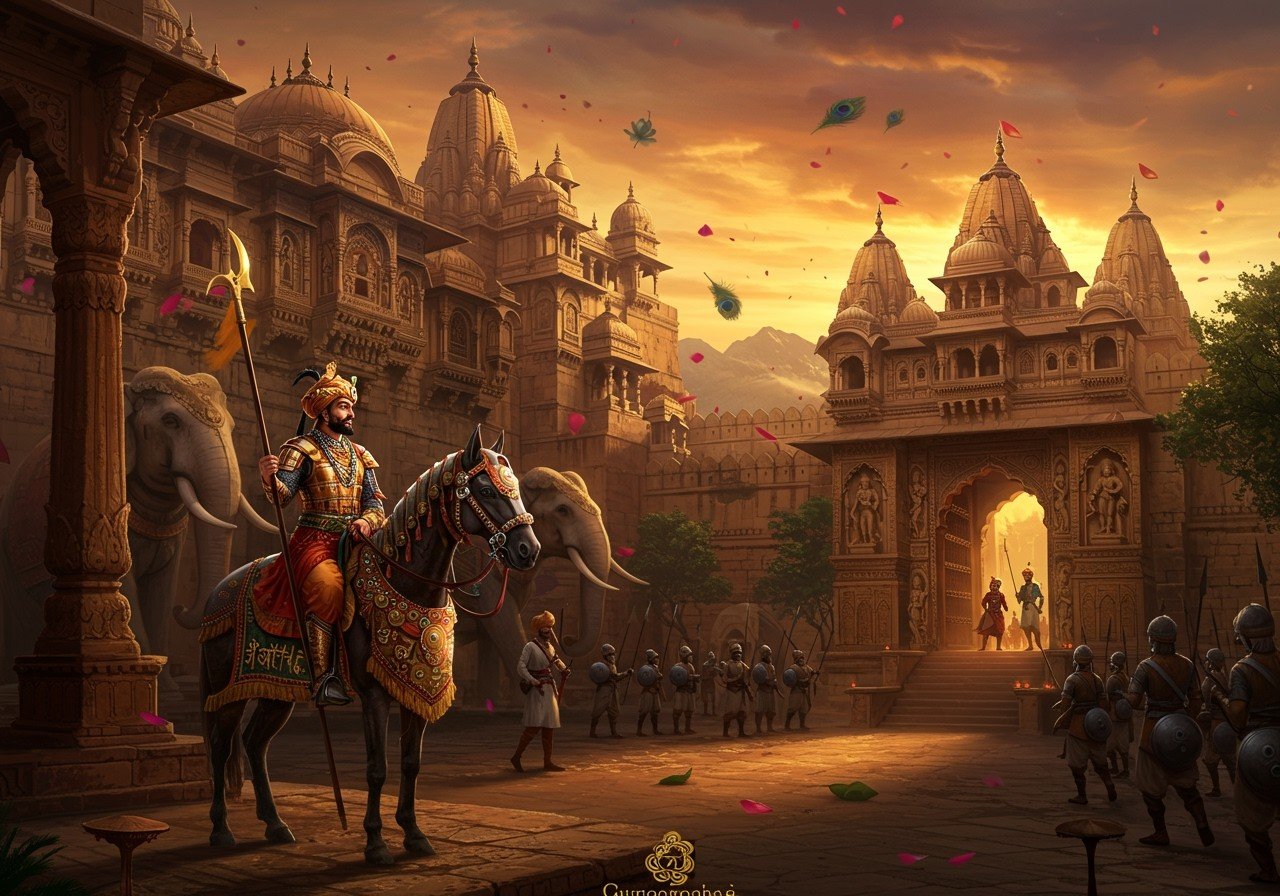
The Pratihara Dynasty, also known as the Gurjara-Pratihara dynasty, significantly shaped medieval Indian history. Emerging in the 6th century AD and rising to prominence in the 8th century, the dynasty is renowned for its contributions to art, culture, and politics. This article delves into the intricate history, ascent, and eventual decline of the Pratihara dynasty, exploring its enduring legacy and influence on contemporary India.
What was the Pratihara Dynasty?
The Pratihara dynasty was a powerful ruling dynasty in northern and central India during the medieval period. The name ‘Pratihara’ comes from ‘Gurjara-Pratihara,’ signifying their origins among the Gurjara people.
Key Aspects of the Pratihara Dynasty:
- Geographical Extent: The empire encompassed regions within present-day Rajasthan, Gujarat, Madhya Pradesh, and Uttar Pradesh.
- Architectural Achievements: They constructed magnificent temples, notably those found at Khajuraho, showcasing their architectural prowess and artistic sensibilities. Learn more about the Kandariya Mahadeva Temple’s religious significance and history.
- Administrative Structure: A decentralized system of governance characterized their administration, with feudal lords playing a substantial role in regional management. This structure allowed for efficient administration across their vast territory.
- Cultural Contributions: The dynasty actively promoted Sanskrit literature and various art forms, fostering a vibrant cultural atmosphere. Their patronage of the arts led to significant advancements in these fields.
- Religious Landscape: Primarily patrons of Hinduism, they also extended support to Jainism at times, demonstrating religious tolerance and inclusivity. This contributed to a diverse religious landscape within their empire.
- Military Prowess: Both their cavalry and infantry forces were highly skilled and effective, contributing to their military dominance. This strength allowed them to expand and defend their territories effectively.
- Socio-Economic Conditions: Trade and agriculture prospered under their rule, indicating a thriving economy and prosperous society. This economic stability further strengthened their empire.
The Rise of the Pratihara Dynasty
The Pratihara dynasty’s rise is marked by strategic military victories and efficient governance.
Factors Contributing to their Rise:
- Critical Victories: The Pratiharas secured crucial victories against rival kingdoms, such as the Rashtrakutas and the Palas, solidifying their control over vital territories and establishing their dominance.
- Role of Mihira Bhoja (836-885 AD): Mihira Bhoja, a prominent ruler, played a pivotal role in expanding and consolidating the empire, leading it to its zenith. His reign is considered a golden age for the dynasty.
- Architectural Renaissance: A remarkable flourishing of architecture and culture occurred during Mihira Bhoja’s reign. Temples like those at Khajuraho serve as enduring examples of this artistic and cultural revival. Explore the architectural wonders of Sas-Bahu Temples.
- Administrative Innovations: The dynasty implemented administrative reforms that strengthened the empire’s stability, ensuring efficient governance and resource management.
- Diplomatic Strategies: Effective diplomatic strategies, including alliances and peace treaties, contributed to a stable reign and peaceful relations with neighboring states.
- Economic Policies: Flourishing trade and commerce under the Pratiharas indicate successful economic policies that facilitated the growth of trade routes and economic prosperity.
- Socio-Cultural Advancements: As patrons of scholars, poets, and artists, the Pratiharas nurtured a vibrant cultural environment, promoting Sanskrit literature and supporting various cultural activities.
The Decline of the Pratihara Dynasty
The decline of the Pratihara dynasty commenced in the late 10th century AD due to internal conflicts and external pressures.
Factors Contributing to their Decline:
- Internal Strife: Succession disputes and internal conflicts weakened central authority, creating instability and vulnerability.
- External Pressures: The emergence of powerful rivals, like the Chalukyas and the Ghaznavids, exerted significant pressure on the Pratiharas, challenging their dominance.
- Significant Defeats: Defeats against the Rashtrakutas marked a turning point, contributing significantly to their downfall.
- Administrative Failures: Loss of control over feudal lords and administrative inefficiencies further weakened their governance.
- Economic Downturns: Disruptions in trade and agriculture led to economic decline, exacerbating their weakening position.
- Cultural Shifts: A decline in patronage for arts and literature signaled a cultural shift, diminishing the vibrancy of their cultural scene.
- Fragmentation of the Empire: The empire eventually fragmented into regional powers, marking the end of Pratihara dominance.
The Fall of the Pratihara Dynasty
Multiple factors contributed to the fall of the Pratihara dynasty.
Key Players and Factors in their Downfall:
- Rashtrakutas: The Rashtrakutas’ military campaigns played a crucial role in weakening and ultimately defeating the Pratiharas.
- Mahmud of Ghazni: Invasions by Mahmud of Ghazni in the early 11th century further destabilized and weakened the already declining dynasty. Explore the Badami Cave Temples, showcasing Chalukya Dynasty architecture.
- Internal Rebellions: Internal rebellions and the rise of local chieftains undermined central authority, accelerating the fragmentation of the empire.
- Strategic Errors: Strategic errors and military failures led to significant territorial losses, hindering their ability to recover.
- Chalukyas: The Chalukyas contributed to the erosion of Pratihara power, further weakening their hold on their territories.
- Socio-Political Context: The socio-political landscape facilitated the rise of new powers, contributing to the Pratiharas’ decline and eventual fall.
Legacy and Conclusion
Despite their decline, the Pratihara dynasty left an indelible mark on Indian history. Their contributions to art, architecture, culture, and politics continue to be studied and admired. The magnificent temples at Khajuraho, much like the Radha Krishna Brass Murti available at Poojn.in, stand as testaments to their architectural prowess and artistic patronage. Their administrative reforms and economic policies laid the groundwork for future governance structures. The Pratiharas’ support for literature and cultural advancements enriched Indian heritage, leaving a lasting legacy for generations to come. Explore Poojn.in for traditional puja items.


